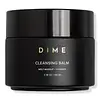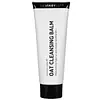What's inside
What's inside
 Key Ingredients
Key Ingredients

 Benefits
Benefits

 Concerns
Concerns

 Ingredients Side-by-side
Ingredients Side-by-side

Caprylic/Capric Triglyceride
MaskingPrunus Armeniaca Kernel Oil
MaskingEthylhexyl Olivate
Skin ConditioningGlyceryl Stearate
EmollientPolyglyceryl-10 Tristearate
Skin ConditioningHelianthus Annuus Seed Wax
Skin ConditioningTrihydroxystearin
Skin ConditioningSqualane
EmollientPolyglyceryl-3 Cocoate
EmulsifyingPolyglyceryl-4 Caprate
EmulsifyingPolyglyceryl-6 Caprylate
EmulsifyingPolyglyceryl-6 Ricinoleate
EmulsifyingVanilla Planifolia Fruit Extract
Skin ConditioningOryza Sativa Bran Extract
Skin ConditioningWater
Skin ConditioningCetearyl Alcohol
EmollientOlea Europaea Fruit Unsaponifiables
AntioxidantStearalkonium Hectorite
Gel FormingPhenethyl Alcohol
MaskingPropylene Carbonate
SolventGlyceryl Caprylate
EmollientHelianthus Annuus Extract
EmollientRosmarinus Officinalis Leaf Extract
AntimicrobialTocopherol
Antioxidant1,2-Hexanediol
Skin ConditioningBisabolol
MaskingCaprylic/Capric Triglyceride, Prunus Armeniaca Kernel Oil, Ethylhexyl Olivate, Glyceryl Stearate, Polyglyceryl-10 Tristearate, Helianthus Annuus Seed Wax, Trihydroxystearin, Squalane, Polyglyceryl-3 Cocoate, Polyglyceryl-4 Caprate, Polyglyceryl-6 Caprylate, Polyglyceryl-6 Ricinoleate, Vanilla Planifolia Fruit Extract, Oryza Sativa Bran Extract, Water, Cetearyl Alcohol, Olea Europaea Fruit Unsaponifiables, Stearalkonium Hectorite, Phenethyl Alcohol, Propylene Carbonate, Glyceryl Caprylate, Helianthus Annuus Extract, Rosmarinus Officinalis Leaf Extract, Tocopherol, 1,2-Hexanediol, Bisabolol
Prunus Amygdalus Dulcis Oil
Skin ConditioningCetearyl Alcohol
EmollientPEG-6 Caprylic/Capric Glycerides
EmulsifyingAvena Sativa Kernel Oil
Skin ConditioningCandelilla Cera
EmollientSilica
AbrasiveSorbitan Stearate
EmulsifyingTribehenin
EmollientPEG-60 Almond Glycerides
EmulsifyingAvena Sativa Kernel Flour
AbrasiveWater
Skin ConditioningBenzyl Alcohol
PerfumingPhenoxyethanol
PreservativeLecithin
Emollient1,2-Hexanediol
Skin ConditioningAscorbyl Palmitate
AntioxidantTocopherol
AntioxidantBiosaccharide Gum-4
Skin ConditioningHelianthus Annuus Seed Oil
EmollientPrunus Amygdalus Dulcis Oil, Cetearyl Alcohol, PEG-6 Caprylic/Capric Glycerides, Avena Sativa Kernel Oil, Candelilla Cera, Silica, Sorbitan Stearate, Tribehenin, PEG-60 Almond Glycerides, Avena Sativa Kernel Flour, Water, Benzyl Alcohol, Phenoxyethanol, Lecithin, 1,2-Hexanediol, Ascorbyl Palmitate, Tocopherol, Biosaccharide Gum-4, Helianthus Annuus Seed Oil
 Reviews
Reviews

Alternatives
Ingredients Explained
These ingredients are found in both products.
Ingredients higher up in an ingredient list are typically present in a larger amount.
1,2-Hexanediol is a synthetic liquid and another multi-functional powerhouse.
It is a:
- Humectant, drawing moisture into the skin
- Emollient, helping to soften skin
- Solvent, dispersing and stabilizing formulas
- Preservative booster, enhancing the antimicrobial activity of other preservatives
Cetearyl alcohol is a mixture of two fatty alcohols: cetyl alcohol and stearyl alcohol. It is mainly used as an emulsifier. Emulsifiers help prevent the separation of oils and products. Due to its composition, it can also be used to thicken a product or help create foam.
Cetearyl alcohol is an emollient. Emollients help soothe and hydrate the skin by trapping moisture.
Studies show Cetearyl alcohol is non-toxic and non-irritating. The FDA allows products labeled "alcohol-free" to have fatty alcohols.
This ingredient is usually derived from plant oils such as palm, vegetable, or coconut oils. There is debate on whether this ingredient will cause acne.
Due to the fatty acid base, this ingredient may not be Malassezia folliculitis safe.
Learn more about Cetearyl AlcoholTocopherol (also known as Vitamin E) is a common antioxidant used to help protect the skin from free-radicals and strengthen the skin barrier. It's also fat soluble - this means our skin is great at absorbing it.
Vitamin E also helps keep your natural skin lipids healthy. Your lipid skin barrier naturally consists of lipids, ceramides, and fatty acids. Vitamin E offers extra protection for your skin’s lipid barrier, keeping your skin healthy and nourished.
Another benefit is a bit of UV protection. Vitamin E helps reduce the damage caused by UVB rays. (It should not replace your sunscreen). Combining it with Vitamin C can decrease sunburned cells and hyperpigmentation after UV exposure.
You might have noticed Vitamin E + C often paired together. This is because it is great at stabilizing Vitamin C. Using the two together helps increase the effectiveness of both ingredients.
There are often claims that Vitamin E can reduce/prevent scarring, but these claims haven't been confirmed by scientific research.
Learn more about TocopherolWater. It's the most common cosmetic ingredient of all. You'll usually see it at the top of ingredient lists, meaning that it makes up the largest part of the product.
So why is it so popular? Water most often acts as a solvent - this means that it helps dissolve other ingredients into the formulation.
You'll also recognize water as that liquid we all need to stay alive. If you see this, drink a glass of water. Stay hydrated!
Learn more about Water